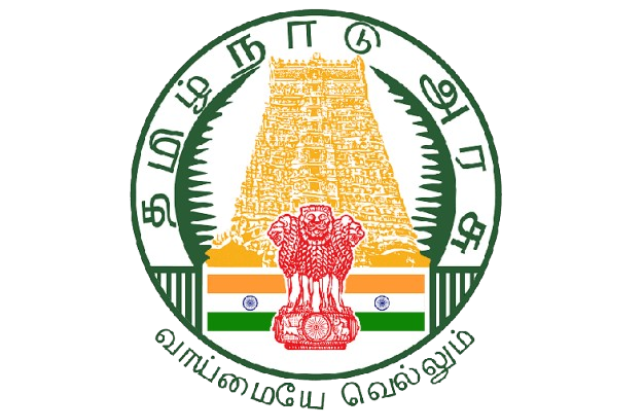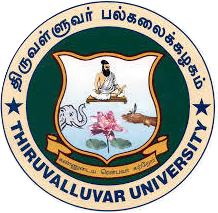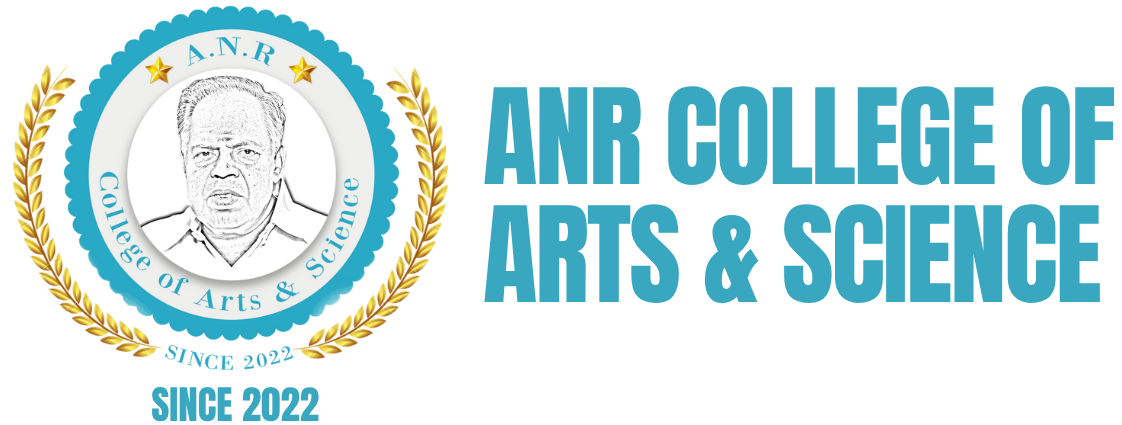| 1 |
I |
Object Oriented Programming Concepts Using C++ |
- Remember the program structure of C with its syntax
and semantics.
- Understand the programming principles in C (data
types, operators, branching and looping, arrays,
functions, structures, pointers, and files).
- Apply the programming principles learned in
real-time problems.
- Analyze the various methods of solving a problem and
choose the best method.
- Code, debug, and test the programs with appropriate
test cases.
|
| 2 |
I |
Object oriented programming concepts using C++ lab |
- Remember the program structure of C with its syntax
and semantics.
- Understand the programming principles in C (data
types, operators, branching and looping, arrays,
functions, structures, pointers, and files).
- Apply the programming principles learned in
real-time problems.
- Analyze the various methods of solving a problem and
choose the best method.
- Code, debug, and test the programs with appropriate
test cases.
|
| 3 |
I |
Introduction To HTML |
- Knows the basic concept in HTML and the concept of
resources in HTML.
- Knows the design concept and the concept of meta
data.
- Understand the concept of saving files, page
formatting, and the concept of lists and creating
links.
- Know the concept of creating links to email
addresses.
- Understand the concept of adding images and table
creation.
|
| 4 |
I |
Problem Solving Techniques |
- Study the basic knowledge of computers and analyze
the programming languages.
- Study the data types and arithmetic operations, and
know about the algorithms.
- Develop programs using flow charts and pseudocode.
- Determine the various operators, explain about
structures, and illustrate the concept of loops.
- Study numeric data and character-based data, analyze
arrays, explain about DFD, and illustrate program
modules. Creating and reading files.
|
| 5 |
II |
Data Structure and Algorithms |
- Understand the concept of dynamic memory management,
data types, algorithms, and Big O notation.
- Understand basic data structures such as arrays,
linked lists, stacks, and queues.
- Describe the hash function and concepts of collision
and its resolution methods.
- Solve problems involving graphs, trees, and heaps.
- Apply algorithms for solving problems like sorting,
searching, insertion, and deletion of data.
|
| 6 |
II |
Data Structure and Algorithms Lab |
- Understand the concept of dynamic memory management,
data types, algorithms, and Big O notation.
- Understand basic data structures such as arrays,
linked lists, stacks, and queues.
- Describe the hash function and concepts of collision
and its resolution methods.
- Solve problems involving graphs, trees, and heaps.
- Apply algorithms for solving problems like sorting,
searching, insertion, and deletion of data.
|
| 7 |
II |
PHP Programming |
- Write PHP scripts to handle HTML forms.
- Write regular expressions including modifiers,
operators, and meta characters.
- Create PHP programs using the concept of arrays.
- Create PHP programs that use various PHP library
functions.
- Manipulate files and directories.
|
| 8 |
III |
Python programming |
- Learn the basics of Python, do simple programs on
Python, and learn how to use an array.
- Develop programs using selection statements, work
with looping and jump statements, and do programs on
loops and jump statements.
- Understand the concept of functions, function
arguments, and implement the concept of lists,
tuples, and dictionaries.
- Understand the basic concept of Object-Oriented
Programming: Class, Object, and Inheritance.
- Learn the usage of file handling in Python and the
concept of GUI programs.
|
| 9 |
III |
Python Programming Lab |
- Demonstrate the understanding of syntax and
semantics of Python language.
- Identify the problem and solve using Python
programming techniques.
- Identify suitable programming constructs for problem
solving.
- Analyze various concepts of Python language to solve
the problem in an efficient way.
- Develop a Python program for a given problem and
test for its correctness.
|
| 10 |
III |
Fundamentals of Information Technology |
- Learn the basics of computers, construct the
structure of the required components in a computer,
and learn how to use it.
- Develop organizational structure for the devices
present currently under input or output units.
- Understand the concept of storing data in a computer
using two headers, namely RAM and ROM, with
different types of ROM and advancements in storage
technology.
- Work with different software, write programs in the
software, and explore the applications of software.
- Understand the usage of operating systems in
information technology, which acts as an interpreter
between software and hardware.
|
| 11 |
III |
Understanding Internet |
- Know the basic concept of the internet and the
concept of the internet.
- Understand the concept of TCP/IP, internet
technologies, and protocols.
- Understand the concept of internet connectivity.
- Know about internet networks.
- Understand the concept of electronic mail.
|
| 12 |
IV |
Java Programming |
- Understand the basic object-oriented concepts and
implement the basic constructs of Core Java.
- Implement inheritance, packages, interfaces, and
exception handling in Core Java.
- Implement multi-threading and I/O Streams in Core
Java.
- Implement AWT and event handling in Java.
- Use Swing to create GUI applications.
|
| 13 |
IV |
Java Programming Lab |
- Understand the basic object-oriented concepts and
implement the basic constructs of Core Java.
- Implement inheritance, packages, interfaces, and
exception handling in Core Java.
- Implement multi-threading and I/O Streams in Core
Java.
- Implement AWT and event handling in Java.
- Use Swing to create GUI applications.
|
| 14 |
IV |
Web Designing |
- On completion of this course, students will:
- Develop working knowledge of HTML.
- Have the ability to develop and publish web pages
using Hypertext Markup Language (HTML).
- Have the ability to optimize page styles and layout
with Cascading Style Sheets (CSS).
- Have the ability to develop JavaScript.
|
| 15 |
IV |
Cyber Forensics |
- Understand the definition of computer forensics
fundamentals.
- Evaluate the different types of computer forensics
technology.
- Analyze various computer forensics systems.
- Apply the methods for data recovery, evidence
collection, and data seizure.
- Gain knowledge of duplication and preservation of
digital evidence.
|
| 16 |
V |
Operating Systems |
- Define the fundamentals of OS and identify the
concepts relevant to process, process life cycle,
scheduling algorithms, deadlock, and memory
management.
- Know the critical analysis of processes involving
various algorithms, with exposure to threads and
semaphores.
- Have a complete study about deadlock and its impact
on OS, along with knowledge of handling deadlock
with respective algorithms and measures to retrieve
from deadlock.
- Have complete knowledge of scheduling algorithms and
their types.
- Understand memory organization and management.
|
| 17 |
V |
Operating System lab |
- Able to understand the basics of UNIX commands and
shell programming.
- Able to understand the programming knowledge of
scheduling algorithms.
- Able to understand the working of semaphores in the
operating system.
- Able to understand how to code various algorithms
used in the operating system.
- Able to understand how to code and the working
procedure of file management concepts in the
operating system.
|
| 18 |
V |
Database Management System |
- Understand the various basic concepts of Database
System. Difference between file system and DBMS and
compare various data models.
- Define the integrity constraints. Understand the
basic concepts of Relational Data Model,
Entity-Relationship Model.
- Design database schema considering normalization and
relationships within database. Understand and
construct database using Structured Query Language.
Attain a good practical skill of managing and
retrieving data using Data Manipulation Language
(DML).
- Classify the different functions and various join
operations and enhance the knowledge of handling
multiple tables.
- Learn to design Database operations and implement
using PL/SQL programs. Learn basics of PL/SQL and
develop programs using Cursors, Exceptions.
|
| 19 |
V |
Database Management System lab |
- Understand the various basic concepts of Database
System. Difference between file system and DBMS and
compare various data models.
- Define the integrity constraints. Understand the
basic concepts of Relational Data Model,
Entity-Relationship Model.
- Design database schema considering normalization and
relationships within database. Understand and
construct database using Structured Query Language.
Attain a good practical skill of managing and
retrieving data using Data Manipulation Language
(DML).
- Classify the different functions and various join
operations and enhance the knowledge of handling
multiple tables.
- Learn to design Database operations and implement
using PL/SQL programs. Learn basics of PL/SQL and
develop programs using Cursors, Exceptions.
|
| 20 |
V |
Introduction to Data Science |
- Understand the basics in Data Science and Big Data.
- Understand overview and building process in Data
Science.
- Understand various Algorithms in Data Science.
- Understand Hadoop Framework in Data Science.
- Case study in Data Science.
|
| 21 |
V |
Artificial Intelligence |
- Understand the various concepts of AI Techniques.
- Understand various Search Algorithm in AI.
- Understand probabilistic reasoning and models in AI.
- Understand Markov Decision Process.
- Understand various type of Reinforcement learning
Techniques.
|
| 22 |
V |
Computer Networks |
- To Understand the basics of Computer Network
architecture, OSI and TCP/IP reference models.
- To gain knowledge on Telephone systems using
wireless network.
- To understand the concept of MAC.
- To analyze the characteristics of Routing and
Congestion control algorithms.
- To understand network security and define various
protocols such as FTP, HTTP, Telnet, DNS.
|
| 23 |
V |
Data mining and warehousing |
- To understand the basic concepts and the
functionality of the various data mining and data
warehousing components.
- To know the architectures and the concepts of Data
mining systems.
- To analyze the principles of association rules.
- To get an analytical idea on Classification and
prediction methods.
- To gain knowledge on Cluster analysis and its
methods.
|
| 24 |
V |
Mobile Computing |
- To understand basic concepts of mobile computing.
- To learn the basics of mobile telecommunication
systems.
- To comprehend wireless LAN and cellular systems.
- To understand protocols at the network and transport
layer.
- To understand protocols at the network and transport
layer.
|
| 25 |
VI |
Natural Language Processing |
- Describe the fundamental concepts and techniques of
natural language processing. Explain the advantages
and disadvantages of different NLP technologies and
their applicability in different business
situations.
- Distinguish among the various techniques, taking
into account the assumptions, strengths, and
weaknesses of each. Use NLP technologies to explore
and gain a broad understanding of text data.
- Use appropriate descriptions, visualizations, and
statistics to communicate the problems and their
solutions. Use NLP methods to analyse sentiment of a
text document.
- Analyze large volume text data generated from a
range of real-world applications. Use NLP methods to
perform topic modeling.
- Develop robotic process automation to manage
business processes and to increase and monitor their
efficiency and effectiveness. Determine the
framework in which artificial intelligence and the
Internet of things may function, including
interactions with people, enterprise functions, and
environments.
|
| 26 |
V |
Project with Viva voce |
- Show leadership skills and learn time management.
- Identify various tools to be applied to a specific
problem.
- Evaluate the reports.
- Take part in a team as well as manage it to deliver
stunning outcomes.
- Assess and develop the individual skills to present
and organize projects.
|
| 27 |
V |
Internship / Industrial Training |
- Find their specific areas of interest, refine their
skills and abilities.
- Show a greater sense of self-awareness and
appreciation for others.
- Apply problem-solving and critical thinking skills
to solve real-time problems.
- Design various solution approaches for addressing IT
business needs.
- Apply best practices of IT industries by working in
the Product or service domain.
|
| 28 |
VI |
Machine Learning |
- Appreciate the importance of visualization in the
data analytics solution.
- Apply structured thinking to unstructured problems.
- Understand a very broad collection of machine
learning algorithms and problems.
- Learn algorithmic topics of machine learning and
mathematically deep enough to introduce the required
theory.
- Develop an appreciation for what is involved in
learning from data.
|
| 29 |
VI |
Machine Learning Lab |
- Appreciate the importance of visualization in the
data analytics solution using python.
- To solve structured to unstructured problems.
- To solving very broad collection of machine learning
algorithms and problems.
- To solving algorithmic topics of machine learning
and mathematically deep enough.
- Develop an appreciation for what is involved in
analyzing and clustering the data.
|
| 30 |
VI |
Data Analytics using R Programming |
- Work with big data tools and its analysis
techniques.
- Analyze data by utilizing clustering and
classification algorithms.
- Learn and apply different mining algorithms and
recommendation systems for large volumes of data.
- Perform analytics on data streams.
- Learn NoSQL databases and management.
|
| 31 |
VI |
Data analytics using R Programming Lab |
- Acquire programming skills in core R Programming
- Acquire Object-oriented programming skills in R
Programming.
- Develop the skill of designing graphical-user
interfaces (GUI) in R Programming
- Acquire R Programming skills to move into specific
branches
|
| 32 |
VI |
Internet of Things and its applications |
- Work with big data tools and its analysis
techniques.
- Analyze data by utilizing clustering and
classification algorithms.
- Learn and apply different mining algorithms and
recommendation systems for large volumes of data.
- Perform analytics on data streams.
- Learn NoSQL databases and management.
|
| 33 |
VI |
Cloud Computing |
- Understand the fundamental concepts and Technologies
in Cloud Computing.
- Able to understand various cloud service types and
their uses and pitfalls.
- Able to understand Cloud Architecture and
Application design.
- Understand the various aspects of application
design, benchmarking and security in the Cloud.
- Understand various Case Studies in Cloud Computing.
|
| 34 |
VI |
Software Project Management |
- Understand the principles and concepts of project
management
- Knowledge gained to train software project managers
- Apply software project management methodologies.
- Able to create comprehensive project plans
- Evaluate and mitigate risks associated with software
development process
|
| 35 |
VI |
Software Testing |
- Students learn to apply software testing knowledge
and engineering methods
- Have an ability to identify the needs of software
test automation, and define and develop a test tool
to support test automation.
- Have an ability understand and identify various
software testing problems, and solve these problems
by designing and selecting software test models,
criteria, strategies, and methods.
- Have basic understanding and knowledge of
contemporary issues in software testing, such as
component-based software testing problems
- Have an ability to use software testing methods and
modern software testing tools for their testing.
|
| 36 |
VI |
Cryptography |
- Analyze the vulnerabilities in any computing system
and hence be able to design a security solution.
- Apply the different cryptographic operations of
symmetric cryptographic algorithms
- Apply the different cryptographic operations of
public key cryptography
- Apply the various Authentication schemes to simulate
different applications.
- Understand various Security practices and System
security standards
|
| 37 |
VI |
Robotics and its Applications |
- Describe the different physical forms of robot
architectures.
- Kinematically model simple manipulator and mobile
robots.
- Mathematically describe a kinematic robot system
- Analyze manipulation and navigation problems using
knowledge of coordinate frames, kinematics,
optimization, control, and uncertainty.
- Program robotics algorithms related to kinematics,
control, optimization, and uncertainty.
|
| 38 |
VI |
Open Source Software Technologies |
- Acquire and understand the basic concepts in Java,
application of OOPS concepts.
- Acquire knowledge about operators and
decision-making statements.
- Identify the significance and application of
Classes, arrays and interfaces, and analyzing Java
arrays.
- Understand the applications of OOPS concepts and
analyze overriding and packages through Java
programs.
- Create window-based programming using applet and
graphics programming.
|





